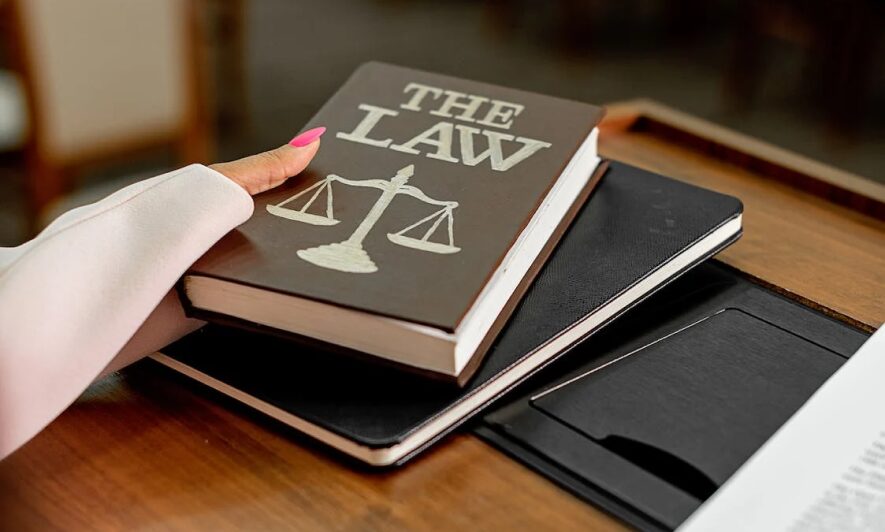4 Essential Elements In Building A Strong Personal Injury Case
by Shahnawaz Alam Legal Published on: 20 February 2024 Last Updated on: 11 November 2024

Navigating the aftermath of an accident can be overwhelming, especially when it results in personal injury. Understanding the key components of a strong personal injury case is crucial for victims seeking justice and compensation. This article outlines the essential elements needed to build a compelling case, highlighting how Meldon Law Firm can help you seek justice.
Let’s Understand Personal Injury Law

Personal injury law encircles legal disputes arising when one person undergoes harm from an accident or an injury, and someone else may be legally responsible for that harm. The legal system allows the injured party to be compensated for injuries caused by someone else’s negligence or wrongful actions.
The Role Of Negligence
Negligence is a fundamental concept in personal injury cases. It occurs when someone fails to act with the care that a reasonably prudent person would in similar circumstances, leading to someone else’s harm. Establishing negligence is crucial for a personal injury claim.
The Importance Of Evidence
Evidence plays a pivotal role in proving negligence and the extent of your injuries. This includes medical records, photographs of the accident scene, eyewitness statements, and expert testimonies. Solid evidence strengthens your claim, demonstrating the impact of the injury on your life.
How To Build Your Case

Building a strong personal injury case requires a strategic approach from the very start. From the moment an accident occurs, each step taken can significantly influence the strength and outcome of your case. It’s essential to act thoughtfully and promptly to establish a solid foundation for your claim.
Immediate Steps After An Accident
Immediate actions post-accident can significantly affect the outcome of your case. Reporting the accident, seeking medical attention, and documenting your injuries and any damage are critical first steps. Moreover, even if your injuries seem minor, it’s essential to see a doctor as soon as possible. Some injuries may not be immediately apparent, and a medical professional can assess your condition and document your injuries, linking them directly to the accident.
Legal Representation
Having experienced legal representation is invaluable. A knowledgeable personal injury attorney can navigate the complexities of the law, advocate on your behalf, and ensure that your rights are protected throughout the process.
Lawyers have the resources to conduct a thorough investigation of your case. They can gather evidence that may be difficult for you to obtain on your own, such as surveillance footage or records from private entities.
Financial Compensation
The ultimate goal of a personal injury case is to secure financial compensation that covers medical expenses, lost wages, pain and suffering, and other related costs. Understanding the types of damages you are entitled to is essential.
Economic vs. Non-Economic Damages
Economic damages are quantifiable costs such as medical bills and lost earnings, while non-economic damages cover pain and suffering, emotional distress, and loss of enjoyment of life. In some cases, punitive damages may also be awarded.
Settlements and Verdicts
Many personal injury cases are resolved through settlements before reaching trial. However, if a fair settlement cannot be reached, the case may go to trial. An adept personal injury attorney can guide you through both scenarios.
The Role Of A Personal Injury Attorney

A personal injury attorney provides critical support, from investigating the details of your case to negotiating with insurance companies and, if necessary, representing you in court.
Expertise and Experience
An attorney with expertise in personal injury law can evaluate the merits of your case, advise you on the best course of action, and work towards achieving the best possible outcome for your situation.
Advocacy and Support
Your attorney will be your advocate, fighting for your rights and ensuring that your voice is heard. They provide not only legal representation but also emotional support throughout the challenging process of recovery and litigation.
Elements Of A Strong Personal Injury Case

Now that you know of the ways in which you can build a strong personal injury case, let us dive into the four major elements that must be incorporated in a personal injury case.
While we have only mentioned the four major elements, we will add a bonus element that will further help enrich your knowledge.
Clear Liability
Clear liability offers the foundation of all your claims and links the injuries to the negligent activities of the opposite party.
Liability arrives from the legal concept that everyone is authorized to a duty of care. This means that we should act responsibly to make sure we are not hurting anyone else. If someone fails to do their duty, it will result in an injury, and hence, the injured party may legally charge them for any damage they have caused.
For example, you went through traumatic brain injuries after a vehicle collision, and it was decided that the individual was driving under the influence. In that case, you may hold the drunk person responsible for the accident they caused as he did not abide by his duty of care.
Damages
Damages are the losses and injuries that you would sustain after a catastrophic accident. Here, you may claim two kinds of damages within the personal injury case: non-economic and economic.
Economic damages are all the financial losses you had to suffer due to the injury. They may include treatment, medical bills, rehabilitation, lost wages, and so on.
On the other hand, non-economic damages are losses that have no monetary value. These are the kind of damages that one sustains which do not qualify as their counterparty. This may include loss of quality of life, emotional distress, and more.
Evidence
Every personal injury case must have very strong evidence that can prove damages and liability in front of the law. The kind of evidence you may use in your own lawsuit usually depends on its very nature.
For instance, accident reports are very useful in cases that involve vehicular incidents. On the other hand, you may use medical records or bills that can verify how severe the injuries are.
The other types of evidence that can be of great support to the case may include:
- Videos and photographs
- Expert testimonies
- Witness statements
- Insurance and financial documents
The more evidence you collect to support the claims, the stronger the case is going to be. You may use multiple combinations of proofs to make the validity of the claim even stronger.
Timeliness
Depending on the nature of the incident, you just have a certain amount of time within which you may be able to file the case. This time limit is generally referred to as the statute of limitations.
This statute of limitations may vary from one state to the other. For example, Arkansas has a statute of three years for all personal injury cases, while in California, it is only for two years.
However, if you are filing the case after the statute limitation of your state, you may lose out on your right to compensation.
Legal Help
While you may file and build a somewhat strong personal injury case all on your own, you are very likely to miss out on a few things. So, it is always better to hire for yourself a legal representative who has all the knowledge about such cases and can make sure you are not missing out on anything.
Conclusion
Building a strong personal injury case requires understanding the legal landscape, gathering substantial evidence, and securing skilled legal representation. If you’ve been injured due to someone else’s negligence, a law firm can help you seek justice, guiding you through each step of your case and fighting for the compensation you deserve. With decades of experience and a commitment to their clients, they are equipped to handle the complexities of personal injury law and advocate for your rights.
Continue Reading:



































































































